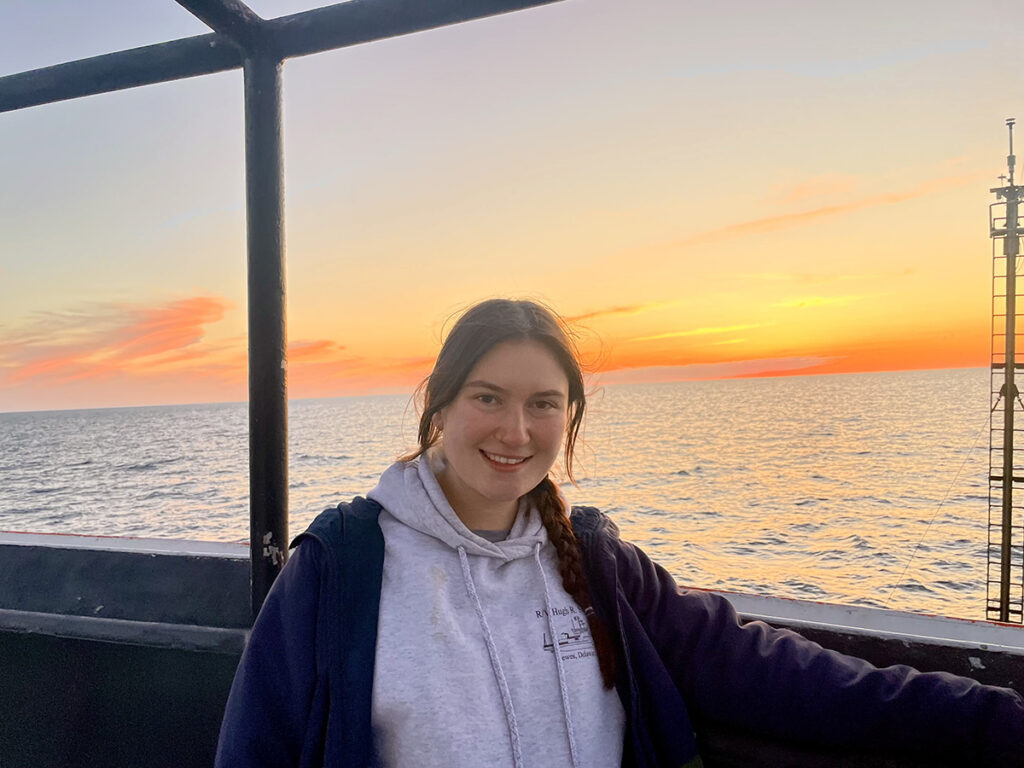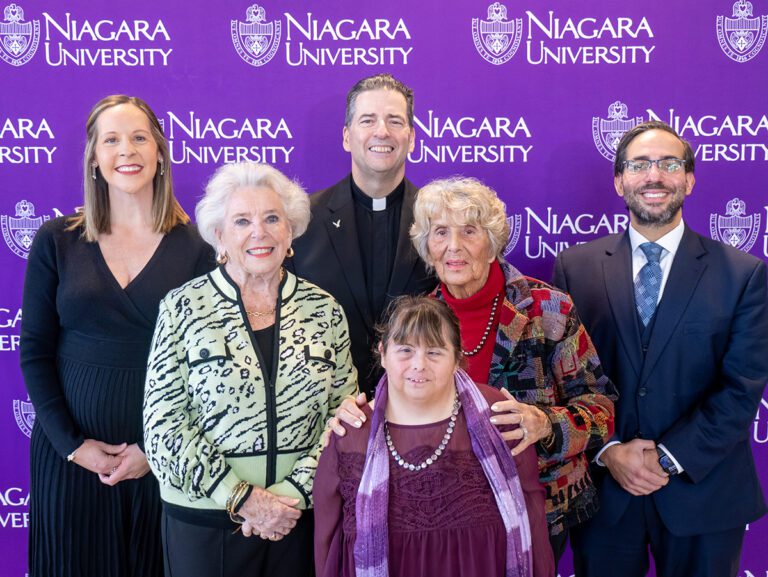An unexpected opportunity to participate in limnological research shifted Kaleigh Block’s career focus from medicine to environmental science and indirectly led to the chance to conduct research at the bottom of the ocean.
Block was in an introductory biology course when Dr. William Edwards invited the students to participate in a project that assessed the biogeochemical properties of sinkholes under Lake Erie. Although she planned to pursue a career as a physician’s assistant, Block was interested in the opportunity.
“I thought the idea of sinkholes under a lake sounded interesting, and I also found the idea of collecting samples and data from a lake super exciting at the time,” Block said. “So, although this research wasn’t related to the health field, I figured that any experience conducting research as an undergraduate student, despite the discipline, would help my chances at being accepted to PA school.”
This experience, and subsequent research work with Dr. Edwards and Dr. Cassandra Marnocha, convinced Block that she belonged in the field of environmental science. The two professors worked with her on reading scientific literature, laboratory techniques and best practices, scientific communication via presentations and conferences, how to safely and effectively plan and conduct field research, and many other valuable lessons, she said. They also encouraged her to continue her studies in graduate school.
Block followed their advice and, after earning her bachelor’s degree in 2020, went on to Iowa State University, where she studied how iron influences rates of phytoplankton productivity within a ferruginous, meromictic lake, earning her master’s degree in 2022.
“I then decided to shift my focus from biogeochemical cycling in lakes to that in oceans,” she said, which led her to the University of Delaware’s marine campus, where she is currently working toward her Ph.D. in oceanography.
Block recently had the unique opportunity to conduct research aboard the R/V Atlantis, which is owned and operated by Woods Hole Oceanographic Institution. As part of a group of faculty, staff, and students from UD, Rensselaer Polytechnic Institute, Middle East Technical University, and Millersville University of Pennsylvania, Block traveled to the East Pacific Rise to explore the contribution of hydrothermal vent systems to dissolved organic carbon cycling in the deep ocean.
“This work aims to elucidate the sources, sinks, and overall fate of organic carbon that are circulated through hydrothermal vents, which will allow us to better constrain the deep ocean as a contributor to the global carbon cycle,” Block explained.

During the 37-day expedition, the researchers used the Alvin, a manned submersible, to investigate hydrothermal vents on the ocean floor. Block took part in one of the dives.
“Being in the Alvin was singlehandedly the most insane, but relaxing, experience I have ever had,” she said. “The sphere of Alvin fits three people and is quite small, so you are always a foot or so away from the pilot. It gets quite cold in there too, so I brought plenty of warm clothing, and they even provided blankets.”
It took about an hour to commute the 1.6 miles from the ocean’s surface to its floor, where Block and another observer spent four hours sampling. In addition to seeing marine wildlife, Block was eager to see the hydrothermal vent spires up close.
“I have read many times over that the hydrothermal vent chimneys/spires can be over 20 meters tall, which is just so difficult to conceptualize without seeing it,” she said. “The site I visited had many different vent chimney structures, all of which looked otherworldly. It is truly surreal to see just how large they are in person—we estimated the ones I visited to be around 25 to 30 meters tall!”
This experience prepared Block for a second research cruise, which she took just 10 days later with a team of other scientists from the University of Louisiana at Lafayette, Mississippi State University, and the University of Georgia. As a member of the research team aboard the R/V Endeavor, she collected samples from methane seep sites in the Atlantic to use for her own dissertation, which focuses on understanding how varying iron and carbon substrates influence rates of methane production from salt marsh sediments, and what happens to the methane that is produced in deep ocean methane seeps.
“It worked out well that I was able to gain experience aboard the Atlantis before going to collect samples for myself,” she said. “Going on that research expedition made me realize that I am exactly where I am supposed to be right now in terms of my academics and future career path. I was able to learn so much during a short time frame.”
Block eventually would like to become a faculty member at an undergraduate institution, “much like NU,” she said.
“I’m thankful for my experiences at NU because I truly believe that if I did not attend NU, I would not hold the position I have today,” she said.





